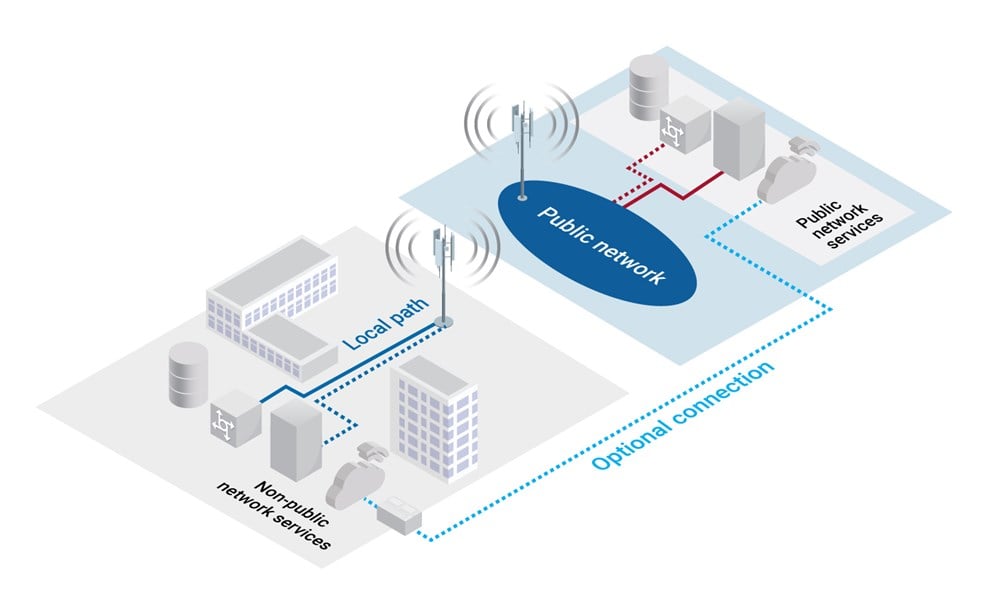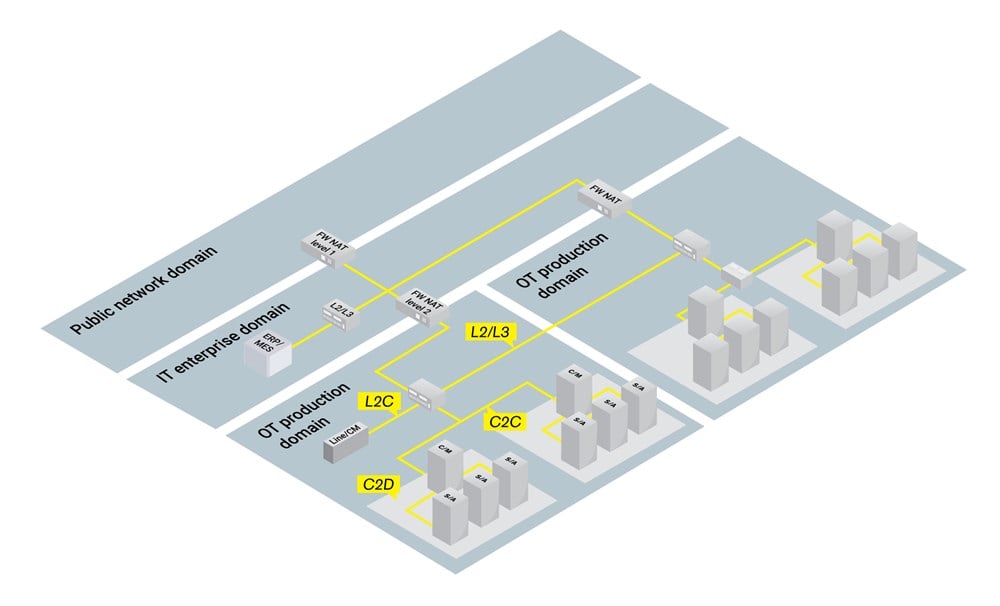Private 5G networks for connected industries
The fourth industrial revolution (or Industry 4.0)—including modern smart technology from 5G to IoT, AI, AR, VR, Blockchain and more—promises to accelerate transformation and automation possibilities. But this revolution can’t move from promise to reality, and along with it deliver the resulting real business benefits, without the network connectivity infrastructure in place that supports these top three requirements:
- massive (and global) connectivity with seamless mobility
- industrial-grade quality of service (QoS)
- unprecedented automation of operations and maintenance (O&M)
The 5G private wireless network, also referred to as a non-public network (NPN), fits the purpose of supporting enterprise requirements across many diverse industry segments. One of the main differences between 5G and previous generations of cellular networks is 5G’s strong focus on massive machine-type communication (mMTC) and the Internet of Things (IoT). These technologies promise powerful connectivity between machines, people and objects, commonly referred to as human-machine interfaces (HMIs).
5G network deployment models
Many factors to be considered when deploying private wireless networks include choice of frequency, owner and operator of network, availability of components, economic feasibility, etc. Depending on specific operational, connectivity and mobility requirements, enterprises have the flexibility to choose between the following two 5G network deployment models:
- Standalone: the 5G private wireless network is deployed as a completely isolated network. All the network functions are located inside the enterprise premises as shown in Figure 1.

Figure 1. Standalone 5G deployment model.
- In conjunction with the public network: deployments are the combination of both 5G private and public wireless networks. This model's three different configurations include shared radio access network, shared RAN and control plane, and are entirely hosted by the public mobile network operator (i.e., public MNO), as depicted in the Figure 2.

Figure 2. 5G model combining both 5G private and public wireless networks.
In addition, and as shown in Figure 3, enterprises have the flexibility to deploy 5G connectivity across the following communication network domains within their organization:
- operational technology (OT) production domains such as a production floor that includes robots, sensors, etc.
- informational technology (IT) enterprise domains such as voice/video/data systems, WAN, etc.
- public network domains such as PLMN, internet, etc.

Figure 3. Options for deploying 5G connectivity across the enterprise.
The role of network slicing
A private network, in conjunction with a public network hosted by a public MNO, can be implemented by deploying network slicing functionality. Network slicing is a critical feature of 5G technology. It allows public MNOs to provide customized networks that enable enterprises to achieve varying degrees of isolation between different service traffic types and the network functions associated with those services.
A network slice can deliver a full-fledged network's functionality—including radio access network, transport and core network functions—from single or multi-vendor equipment. A single network can support one or several network slices. Network slicing will enable and accelerate new business relationships and business models between MNOs and enterprises. However, as with any new technology, it will present new challenges for all parties involved.
Stringent QoS and real-time O&M automation requirements
Enterprises deploying 5G private wireless networks will face stringent QoS and real-time O&M automation requirements.
The need for stringent QoS requirements is because the OT domain has a unique requirement to manage hazardous environments, worker safety and health, remote-controlled operations and more. For example, manufacturing use cases such as motion control and mobile robots demand an ultra-low latency factor of 1 ms (or less) and high availability up to a stringent eight-nine’s or 99.999999%.
It is imperative that private networks be tested and monitored for adherence to the stringent SLA and low latency (transmission time) QoS requirements of diverse traffic types. This includes traffic behavior ranging from deterministic traffic to non-deterministic and burst traffic, from periodic to aperiodic messages, and from small data volumes to large data volumes.
Unprecedented real-time O&M automation is also of critical importance to the enterprise. The goal is to automate, where feasible, to be able to operate without or with very minimum human intervention. This will not only reduce operational costs but also prevent emergencies, reduce downtime, improve productivity and more. O&M automation includes fault, configuration, accounting, performance and security management (FCAPS) activities.
Real-time service assurance inputs are critical for O&M automation and to enable closed-loop control or automation in the enterprise network. Service assurance data collection—including data from sensors, actuators, and other network devices—enables 360° situational visibility and helps enterprises to understand, and even predict, how anomalies will impact their network and to remediate issues quickly. Examples of this include safety monitoring of wearables and protective equipment, removing workers from hazardous situations with the help of video feed and reduced downtime through predictive maintenance.
More to come on 5G enterprise private networks
In this blog, I introduced the 5G wireless network for connected industries and discussed connectivity, QoS, and automation and the importance of testing, monitoring, and assurance. And in my follow-up blogs, I will share additional insights on QoS functional requirements, data traffic characteristics, dependability parameters such as availability, challenges on virtualized and containerized (cloud-native) deployments and more. In addition, I will discuss the importance of real-time assurance enabled O&M automation for enterprise private wireless networks.




